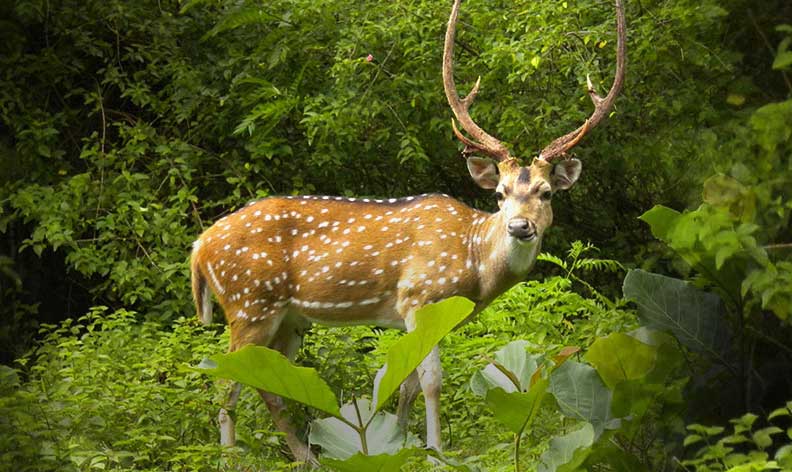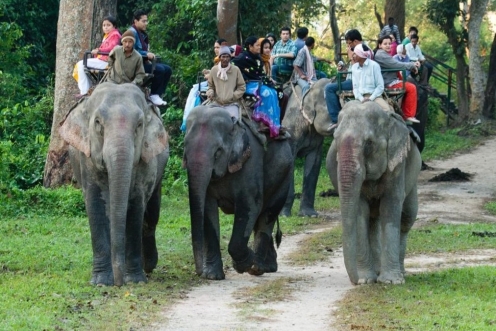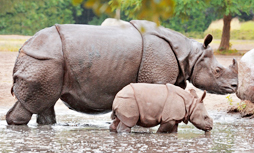





The Indian Barasingha or Swamp Deer, is an endangered species of deer, and can be seen in protected sanctuaries in India. They derive their name from the large antlers of the adult male Barasingha, which may grow to have more than 12 points, hence the translation of its name in Hindi, 12- antlered Deer.
Cervus duvauceli
The Barasingha was previously seen across most of North and central India in areas of moist forest and swampland. With the destructions of its habitat, the Barasingha is now seen in isolated protected forests in Uttar Pradesh, Assam and Madhya Pradesh.
It is estimated that there are less than 5000 Barasingha worldwide. There are three sub species of Barasingha found in India.
The Barasingha is a medium sized deer. It can grow to a height of 130 cm and weigh up to 180 Kg. The Barasingha has a dense brown coat that keeps it warm and dry in its moist habitat. The coat of the male Barasingha becomes darker in color during the mating season. The antlers of an adult male Barasingha can grow up to 75cm long and can have more than 12 points. Habitat: The Barasingha prefers tall grass and reed beds near rivers. Marshes or swampland is a Barasingha's preferred territory. The Barasingha is found in forested areas in the Gangetic and Brahmaputra basins in India.
Barasingha are herbivores. They feed mainly on grass and leaves. The wetland subspecies of Barasingha also eats aquatic plants. They make several trips in a day to water holes or riverbanks to drink.
Barasingha are active and graze during both the day and the night. Barasingha are usually seen in herds that vary in size depending on the time of year. Herds usually consist of 10 - 20 members. During the breeding season they form larger breeding herds of 30 - 60 deer. Male Barasingha fight to establish control over a herd of female deer. During the rest of the year adult male Barasingha are often solitary.
The Barasingha is a vulnerable species. The destruction of their habitat due to deforestation, the draining of swamps and marshes for farming, poaching for its horns and diseases transmitted by domestic cattle, have all led to the decline of the Barasingha in India.
Tourists can see the Barasingha in the wild, in the Dudhwa National Park in Uttar Pradesh in North India, the Kanha and Indravati National Parks in Madhya Pradesh in Central India and Kaziranga and Manas National Parks in Assam in North East India.
Experience the rare pleasure of seeing the endangered Barasingha or Swamp Deer on India Wildlife Tours.